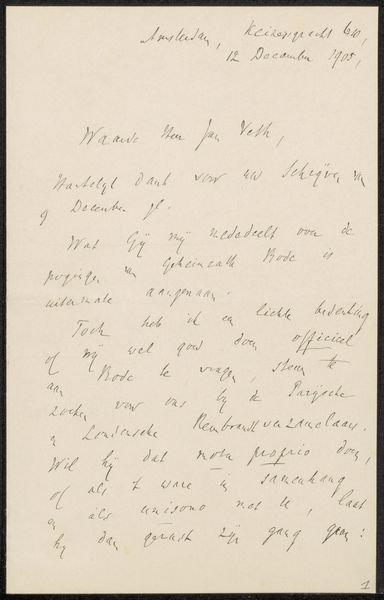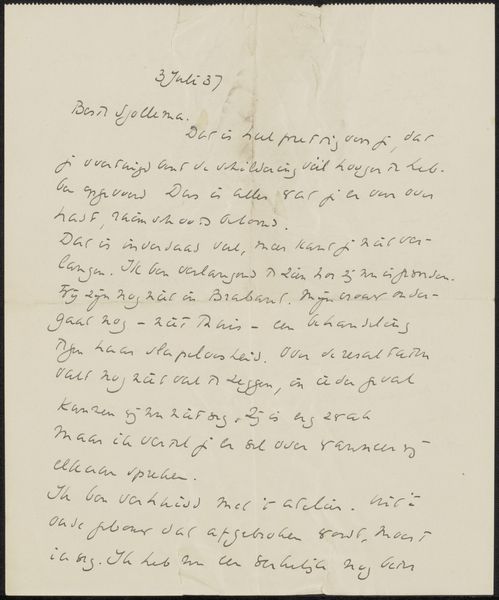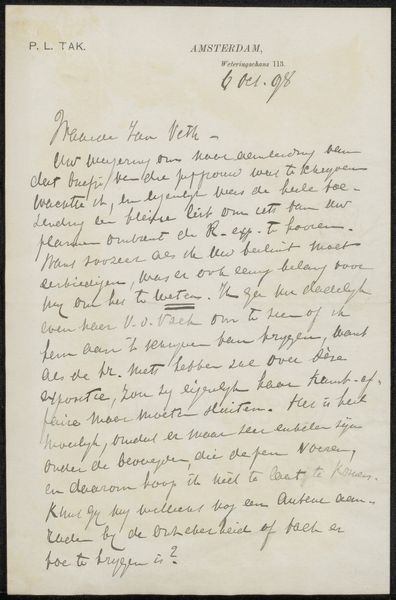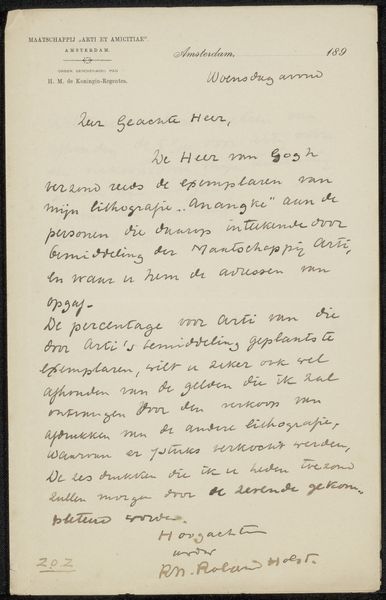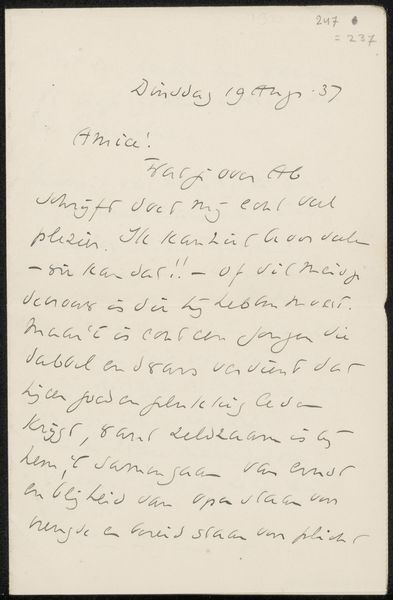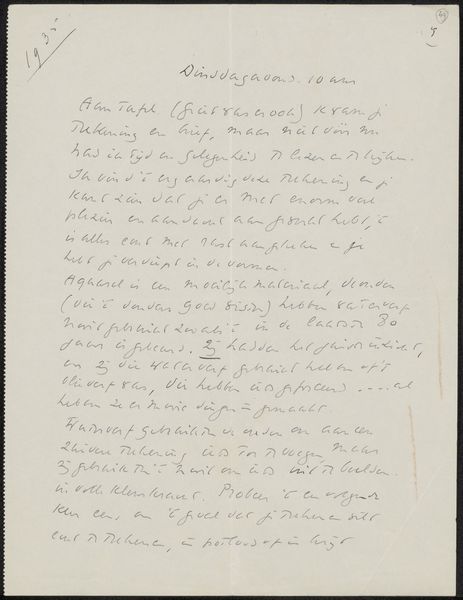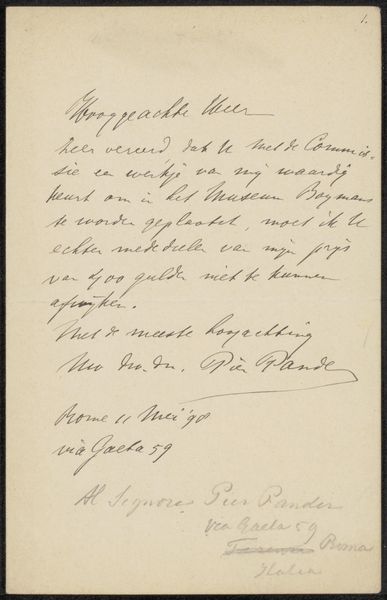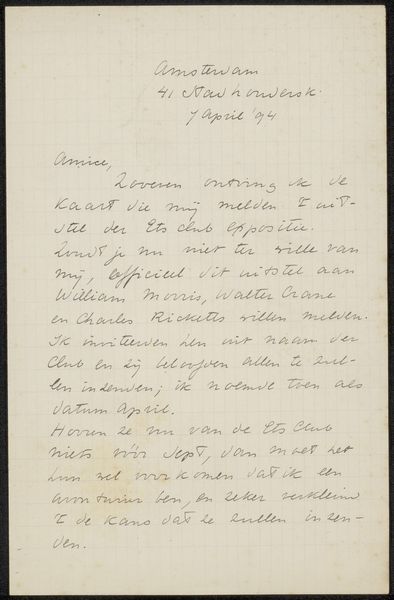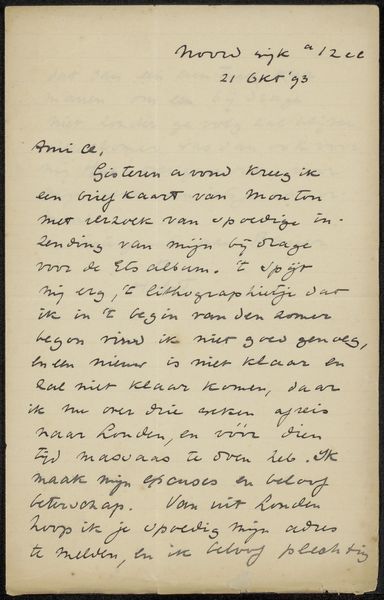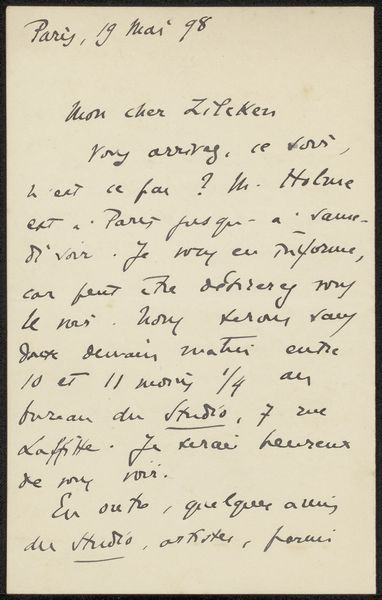
drawing, paper, ink
#
drawing
#
paper
#
ink
Copyright: Rijks Museum: Open Domain
Curator: This drawing, held here at the Rijksmuseum, is titled "Brief aan Joop Sjollema." It was created sometime between 1910 and 1938 by Richard Nicolaüs Roland Holst, using ink on paper. Editor: It looks…intimate. I can almost feel the presence of the hand that wrote it, a sort of private conversation laid bare for public viewing. The slanted handwriting conveys a hurried but careful intent. Curator: Roland Holst was very engaged with the socialist movement and arts education. Considering this, I see the letter not merely as a personal correspondence but as potentially reflective of those broader commitments. The letter's purpose—what was being asked or discussed with Joop Sjollema? These considerations position the artifact in relation to the politics of the period. Editor: You’re absolutely right. Reading between the lines becomes an act of social archaeology. Who was Joop Sjollema in relation to Holst? A student, a colleague, or something more personal? These power dynamics—did Holst consider Sjollema as equal, did his artistic stature somehow impact this relationship? Curator: Yes, this ties to questions of access and patronage within the art world itself. A letter like this provides a snippet into these social fabrics and can bring nuance to the artist's well-known, more public socialist views. We are essentially watching history happen between two people. Editor: It underlines the point that the 'private' and the 'political' were so heavily intertwined. These traces of thought processes open up broader perspectives regarding artistic movements as impacted by intimacy and camaraderie, aspects that tend to be left out of art histories. Curator: This close reading emphasizes how even the simplest artifact, like this letter, becomes valuable when studied through different lenses. Understanding his social milieu contextualizes the work. Editor: Absolutely. And it reveals the necessity of questioning historical voices, to see what might lay just under the surface in that moment of writing and thinking.
Comments
No comments
Be the first to comment and join the conversation on the ultimate creative platform.
